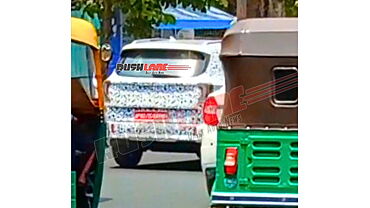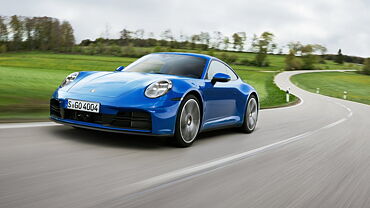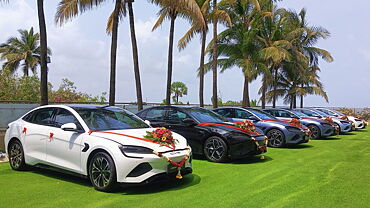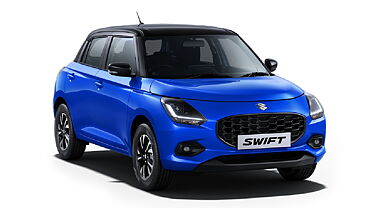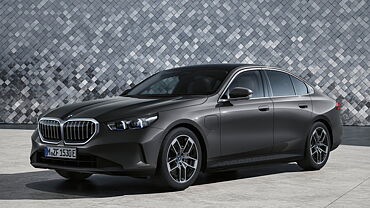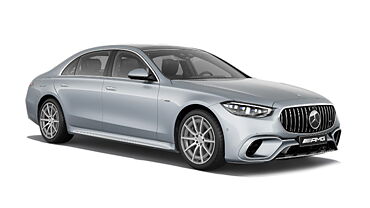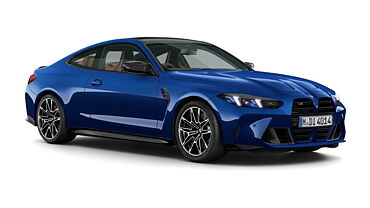Daimler AG based in Stuttgart Germany, which is known as DAI in stock market, has gained Earnings before Income and Taxes (EBIT) of € 2,130 million during the first quarter of 2012. These earnings are slightly edged upon the figures of corresponding period last year, which stood at € 2,031 million. The net profit of the company surged by 20 per cent, resulting to € 1,416 million, whereas the figures of first quarter in 2011 were spotted at € 1,180 million. Earnings per share of Daimler increased to € 1.25 from € 0.99 of the Q1 in 2011.
Dr. Dieter Zetsche, Chairman, Board of Management, Daimler AG and Head, Mercedes-Benz Cars, quoted “We have started the year with a strong first quarter. Despite higher investment in future growth and a challenging market environment, we succeeded in surpassing the very good prior-year results in terms of unit sales, revenue, EBIT and net profit. We are on schedule to meet our targets for this year as well as our medium-term targets.”
The growth in profits basically depicts the increase of unit sales at Daimler Trucks and Mercedes-Benz Cars. Company witnessed unfavourable trends in income, which was mainly related with the enlargement of its product portfolio. It incorporates the existing offering, which is unpleasant at Daimler Trucks. However, the fluctuations in exchange-rates have positively impacted on the earnings of Daimler.
Daimler’s decision to relocate its European bus dealing resulted in allege of € 36 millions. During Q1 of 2012, the global sales of cars and Commercial Vehicles (CV) manufactured by Daimler Group stood at 502,100 units, reflecting a growth of 9 per cent when compared to the data of last year. Owing to this, the revenues of the company were increased to € 27 billion. Offsetting the effects of fluctuations in exchange-rate, the income increased by 7 per cent.
The free cash flow from the industrial business declined contrast to the figures of Q1 of 2011, amounting to deficiency of € 2 billion. The fall was observed because of usual seasonal growth of working capital and mainly due to increased inventories. Mercedes-Benz considers that higher value stocks are connected with the beginning of acme time of selling in spring and the launch of new cars in market, including B-Class, SL and the notch Sports Utility Vehicles (SUV). The inventories of Daimler Trucks increased by the end of Q1 in Asia and the NAFTA region as an anticipation of decent demand in these regions. In addition, the factors which reduced free cash flow included large amount of investment in property, equipment, plant and intangible assets. Along with these, the capital contributions with the movement of Bergen business to Engine Holding, a Joint Venture (JV) of Daimler and Rolls-Royce recounting to Tognum and the alliance amid Foton and Daimler Trucks in China.
When evaluated with the records of 31st December 2011, the net value of company’s industrial business reduced by € 1.9 billions, amounting to € 10.1 billions. The main idea conceived behind this downfall was the unfavourable free flow of cash. By the end of Q1 of 2012, Daimler globally had 274,127 employees, whereas at the end of same period last year, the company employed 261,718 individuals. From the total employees, 168,017 were dedicated in Germany, whereas at the end of Q1 in 2011 the region had 164,131 workers.
Considering the unit sales of Mercedes-Benz, the company set a new record in Q1 of 2012 as its sales increased by 9 per cent, resulting in 338,300 units. In contrast, during the corresponding period last year, the sales figures stood at 310,700 units. The profits of first quarter in 2012 rose by 8 per cent, which amounted to € 14.9 billions. The EBIT of Mercedes-Benz was € 1,252 millions, which stood near the income of same tenure last year; € 1,288 millions in first quarter of 2011. The return by division in sales was 8.4 per cent, whereas the results of first quarter in 2011 were at 9.3 per cent.
The increase in profits of Mercedes-Benz was headed by development in its unit sales, mainly in European market and the United States. The company witnessed brilliant growth rates in C-Class and the SUV segment. Favourable fluctuations in exchange rates also helped the company to record boost in its overall income. On the other hand, one of the reasons emerged for decrease in projected earnings was the reduced pricing policy in China for the time being. The company also witnessed expenses in relation for expanding its production capacity and high spending over advanced technologies and new vehicles.
Unit sales of Daimler Trucks rose by 21 per cent, which resulted in 107,700 units. With this, the income of Daimler Trucks increased by 18 per cent amounting to € 7.4 billions, against € 6.2 billions in Q1 of 2011. The EBIT stood at € 383 millions, which were comparatively less under the review of € 413 millions in the prior year period. The return on sales for this year was 5.2 per cent, whereas the figures of corresponding period of 2011 stood at 6.6 per cent.
The earnings of the company were affected because of the favourable growth in unit sales, whereas the revenue had impact in Asia and the NAFTA region. However, the company also incurred expenses which were related to the present unpleasant merchandise. In addition to this, there was another unfavourable blow over earnings from the reducing unit sales in complicated auto market of Latin America.
The unit sales of Mercedes-Benz Vans reduced to 51,200 units in Q1 2012, mainly because of the negative trends in the market of Western Europe, which registered sales of 54,000 units in Q1 2011. The revenue generated by the company stood at € 2.1 billions, which was higher than the figures of Q1 2011, which showed € 2.0 billions. The operating profit of Mercedes-Benz for the first quarter of 2011 was € 168 millions, whereas the figures in same period last year stood at € 173 millions. Return on sales resulted to 8 per cent, in contrast with 8.8 per cent of Q1 2011.
Even though the company registered lesser unit sales, a negative model offensive and huge expense on research and development, its Vans had the potential to uphold a decent level of revenue.
The global unit sales of Daimler Buses stood at 4,900 units, which were lower than the figures registered last year of 7,700 units. The downfall witnessed by the company was mainly because of the less demand raised in Latin America. The bus business in US and Europe also remained at a slow pace. Parallel with the growth of unit sales, the profits generated of € 730 millions were less than the figures of Q1 last year which stood at € 831 millions.
The EBIT showed negative growth of € 103 millions, mainly because of fall in unit sales by 37 per cent, whereas the figures of Q1 in 2011 reported minus € 33 millions. Especially in Latin America, consignments also reduced as compared to higher figures reported in corresponding quarter last year.
Addressing as a crucial part of company’s strategy, Daimler Buses has initiated its “GLOBE 2013” growth-and-efficiency programme. This event is framed to accomplish the objective 6 per cent return on sales in the near future, which will capture the complete value chain and all division sites of company. Under “GLOBE 2013,” Daimler Buses will also exploit current potential of development in its usual markets and at the same time will further consolidate its presence in new markets.
The business of Daimler Financial Services remained to grow in the Q1. Globally, the division signed around 234,000 new financing contracts and leasing, which represented a total of € 8.3 billions. When compared to the figures of last year, the growth rate stood around 20 per cent. By the end of Q1 2012, the degree of contract resulted at € 71.6 billions and rest of data was evaluates with the end of 2011. Offsetting the fluctuations in exchange rates, the division marked an increase of 1 per cent.
This segment of Daimler attained revenues of € 344 millions, which surpassed the figures of € 321 millions recorded last year. Reason conceived behind this favourable growth was the expanded degree of contract against Q1 in 2011. The settlement of segment’s EBIT to Group EBIT mainly reflects the impartial results share of Daimler’s investment by equity-method in EADS with other losses and gains at business level.
The company’s balanced share in EADS’s net profit for Q1 in 2012 stood at € 133 millions, whereas the figures of Q1 2011 were € 74 millions. The settlement also incorporates expenditures worth of € 35 millions at business level, whereas in Q1 of 2011 such expenses stood at € 189 millions.
While concentrating over individual segments, Daimler hope that its overall unit sales of 2012 to be more than the figures of 2011, which marked 2.1 million units. Mercedes-Benz targets that the company will further expand its unit sales by the end of this year and will approach towards market with a fast pace. The company hopes that its unit sales in remaining quarters of 2012 to be more than the corresponding quarters of last year.
Mercedes-Benz will generate profit by meeting with the brilliant demand raised for its vehicles in C-Class segment. At the end of March 2012, the company introduced a new car SL, which has emerged as a dominant in sports-car segment. The company also expects a decent demand for its SUVs, mainly because of its new M-Class and new GL, which will launch in September 2012. Along with this, the new avatar of GLK compact SUV and of G-Class will spark at the market in June 2012.
The new offerings in high-volume compact SUV segment will also help the company to attain its projected unit sales. Mercedes-Benz launched its new B-Class in November 2011, which will be followed with the launch of new A-Class in September 2012. Along with these launches, the company will also introduce a new concept in September 2012, the CLS Shooting Brake. In domestic terms, the opportunities of growth in 2012 are anticipated in the auto markets of North America, China, India and Russia.
Daimler Trucks again expects increase in its unit sales of 2012. The brand aims to improve its presence in Europe, rather than in market as a whole. In this respect, the most pivotal model is the new Actros. In Brazil, market effect is related with the implementation of strict emission regulations, which clearly depicts that the sales will be affected in this region. However, Daimler Trucks is in full form to maintain its niche in the market despite of changes in emission policy. This is due to the average tenure of trucks is still quite high in NAFTA region, and there is a great demand of substitute vehicles in the market. The increase in unit sales is also expected in Japan, which will be leaded by the task of rebuilding, followed by the unwanted natural calamity.
Daimler Trucks is also set to take another crucial step for growth in new markets. In Indian auto industry, the company will initiate the manufacturing of its trucks in Q3 under the brand of BharatBenz. In China, biggest truck market in the world, the company is planning a dual strategy, which includes the distribution of high-value Mercedes-Benz trucks in premium segment and the sale of trucks in lower volume market with alliance with Foton. Joint venture will start manufacturing trucks in Q3 under the brand of Auman. With its deliberate partner Kamaz, Daimler Trucks is pursuing to enter in the developing Russian market with its two ventures. Working under such practices, the company is also establishing its strong international presence.
On the other hand, Mercedes-Benz Vans also anticipates that it will further raise its unit sales in 2012. The division recently launched new Citan, which is placed in the small-van segment and will surely assist the company pace up its unit sales in the European market. In general, the company aims to uphold the volume of unit sales in European market, which was achieved in 2011. In US, Mercedes-Benz also anticipates that it will record more sales in the current fiscal as compared to the figures of last year. However, the company should be also able to become a part of the favourable growth of Latin America’s auto market, since it introduced the current generation model of Sprinter.
Daimler Buses expects a downfall in its unit sales of 2012 through which the buses should entitle for a great share of overall unit sales. The company anticipates a reduced demand in the current year on top of all in Latin America because of the launch of Euro V emission standards. However, it is expected that the effect will be slightly offset with its range of complete buses in European market.
Daimler Financial Services hopes improved development in the volumes of growth and seeks new business opportunities in 2012. Remaining parallel with the major development in 2011, the Daimler Group anticipates that its earnings will again improve in 2012. In domestic conditions, the company expects more than average growth rates in North America and other developing markets.
In lieu of existing market believes and the initiatives of individual divisions, Daimler hopes to attain Group EBIT from the active business during 2012, which is in the circuit of the last year. The objective floats over the belief of fluctuations in currency exchange rates, which are near to their current levels.
Later in 2012, Daimler Buses foresees expenditures of around € 50 millions for relocating the bus business in Europe and around € 60 millions for the same purpose in North America. Owing to the decent demand for its offerings, the company anticipates that its global employees will increase from the figures reported in 2011.
In addition, Daimler also aims to attain yearly average return on sales of 9 per cent in the market and its array of vehicles. This expectation floats over the aimed returns on sales in individual sections, which will be accomplished on a continued basis till 2013. It will include 10 per cent for Mercedes-Benz Cars, 8 per cent for Daimler Trucks and 9 per cent for Mercedes-Benz Vans. Daimler Buses has set a target of 6 per cent which is to be attained in the near future. The objective of Daimler Financial Services is set to attain return on equity of 17 per cent.
The special items mentioned in the following table left impact on EBIT in Q1 of 2012 and 2011:
| Special items affecting EBIT | ||
| In millions of euros | Q1 2012 | Q1 2011 |
|
Daimler Trucks Natural disaster in Japan |
- | -49 |
|
Daimler Buses Business repositioning |
-36 | - |
|
Daimler Financial Services Natural disaster in Japan |
- | -29 |
